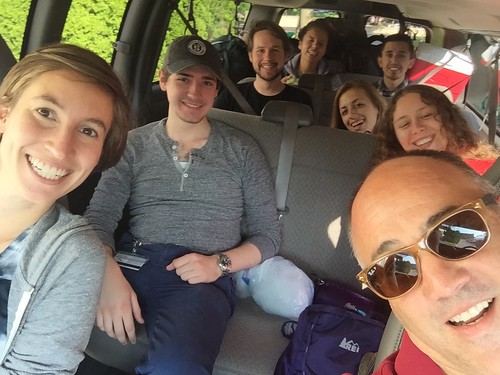Carolyn: After releasing our first draft of the Insect Collector’s Oath and opening it to discussion, I have been reading up on how codes of ethics are used in different disciplines. The paper I read this week is from the American Psychological Association concerning the history and use of professional codes of ethics for psychologists in the United States. The authors point out that codes of ethics can be viewed by some as principles to live up to, and by others as an enforceable code of conduct. Something that is clear to me from this paper is that a code of ethics, much like taxonomy, is dynamic and changing, never static. The paper gives an overview on how the APA code of ethics has changed from the original 1953 code to the current 2010 code, undergoing revisions roughly every 5 years to address factors such as changes in professional values, as well as societal and governmental influences on the field.
Emily: As I prepare to present my findings on coenagrioid species distributions at the Dragonfly Society of the Americas annual meeting, I have been reading up on sampling bias in natural history collections and its effect on subsequent research from these collections. Ward (2012) examined the sampling records of Hymenoptera in New Zealand, finding that the average number of records per location varied between 2 and 12 per each location. In the case of the collection I am researching in, we can have easily 30 specimens of a single species collected in one event. Furthermore, Ward highlights that it is extremely beneficial to sample an area well (i.e. repeat visiting a location) in order to examine the faunistic changes. I am interested in investigating the bias in our own collection and determining how much that affects biodiversity analyses.

Andy: I continue to work on my course materials for the fall, which is, as usual, coming up way too fast. Students in the past have requested some sort of specimen prep cheat sheet – a reference that guides their decisions regarding whether something should be put in ethanol or pinned or something else. I created something very quick and dirty last year, and I spent time last week massively updating it. Here is the latest version: Insect specimen preparation guide (see the appendix, page 6). I was inspired to update this guide after chatting with folks at the ANSP about how to prep Orthoptera. Turns out I have been doing it incorrectly all these years, pinning crickets instead of putting then in ethanol, not pulling guts of large grasshoppers, advising students not to bother spreading wings, etc. What else have I been doing wrong?! I’m still looking into taxon-specific best practices, but I started my process by revisiting Schauff’s update (2005) to the USDA’s Collecting and Preserving Insects and Mites, Techniques & Tools (PDF).
I also dove into the Anoplura literature to see what new species have been published in the last 15 years. We have an amazing collection here at the Frost, including many undescribed species … at least they were suspected to be new 25 years ago. Have they been described since? I’m still digging into that question. This recent new species surprised me, though: Linognathus weisser Durden & Horak, 2015, a parasite of impalas (Aepyceros melampus (Lichtenstein, 1812)). I would’ve thought impala lice were all described already!




